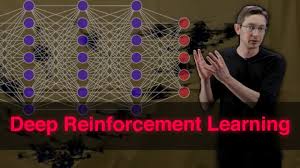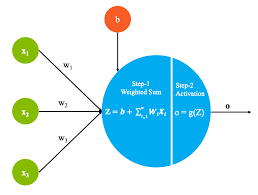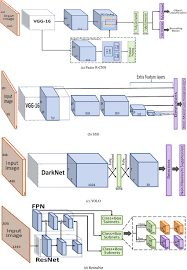Reinforcement Learning Neural Network: A Breakthrough in Artificial Intelligence
In the realm of artificial intelligence, the fusion of reinforcement learning and neural networks has paved the way for groundbreaking advancements in machine learning. This innovative approach combines the power of neural networks with the principles of reinforcement learning to create intelligent systems that can learn and adapt to their environments.
At its core, a reinforcement learning neural network is designed to mimic the way humans learn through trial and error. By utilizing a system of rewards and punishments, these networks are able to optimize their decision-making processes over time, ultimately leading to more efficient and effective outcomes.
One of the key strengths of reinforcement learning neural networks is their ability to handle complex, dynamic environments. Traditional machine learning algorithms may struggle with tasks that involve uncertainty or changing conditions, but these advanced networks excel in such scenarios by continuously adjusting their strategies based on feedback from their environment.
Applications of reinforcement learning neural networks span across various industries, from robotics and autonomous vehicles to finance and healthcare. In robotics, these systems can be used to teach robots how to navigate unfamiliar terrain or perform intricate tasks with precision. In finance, they can analyze market trends and make informed investment decisions. In healthcare, they can assist in diagnosing diseases or personalizing treatment plans for patients.
As research in this field continues to evolve, we can expect even more sophisticated applications of reinforcement learning neural networks in the future. With their ability to learn from experience and optimize decision-making processes, these intelligent systems hold great promise in revolutionizing how we interact with technology and solve complex problems.
Mastering the Basics and Beyond: A Guide to Reinforcement Learning Neural Networks
- What is a reinforcement learning neural network?
- How does a reinforcement learning neural network work?
- What are the advantages of using reinforcement learning in neural networks?
- What are some common applications of reinforcement learning neural networks?
- How do reinforcement learning neural networks differ from traditional machine learning algorithms?
- What challenges are associated with training reinforcement learning neural networks?
- Are there any limitations to the capabilities of reinforcement learning neural networks?
- How can one get started with implementing a reinforcement learning neural network?
- What are some best practices for optimizing the performance of a reinforcement learning neural network?
What is a reinforcement learning neural network?
A reinforcement learning neural network is a sophisticated type of artificial intelligence that combines the adaptive capabilities of neural networks with the decision-making framework of reinforcement learning. This AI model is designed to learn optimal behaviors or strategies through interaction with an environment by performing actions and receiving feedback in the form of rewards or penalties. The neural network aspect allows the system to process complex inputs and map them to actions, while reinforcement learning guides the system toward maximizing cumulative rewards over time. These systems are particularly adept at solving problems where explicit programming is impractical, such as in dynamic environments where conditions constantly change or in scenarios where the solution is discovered through sequential trial-and-error interactions.
How does a reinforcement learning neural network work?
A reinforcement learning neural network operates by leveraging a combination of neural network architecture and the principles of reinforcement learning. Essentially, the network learns through a process of trial and error, where it receives feedback in the form of rewards or punishments based on its actions in a given environment. By continuously interacting with the environment and adjusting its strategies based on this feedback, the neural network improves its decision-making abilities over time. This iterative learning process enables the network to optimize its actions to achieve specific goals or tasks, making it a powerful tool for tackling complex problems in various domains such as robotics, finance, and healthcare.
What are the advantages of using reinforcement learning in neural networks?
When it comes to utilizing reinforcement learning in neural networks, there are several distinct advantages that make this approach highly effective. One key benefit is the ability of reinforcement learning to enable continuous learning and adaptation based on feedback from the environment. This dynamic process allows neural networks to optimize their decision-making processes over time, leading to improved performance and efficiency. Additionally, reinforcement learning empowers neural networks to handle complex and uncertain environments with ease, making them well-suited for a wide range of applications across various industries. By leveraging the power of reinforcement learning in neural networks, organizations can achieve enhanced capabilities in tasks such as robotics, finance, healthcare, and more, ultimately driving innovation and progress in artificial intelligence technology.
What are some common applications of reinforcement learning neural networks?
Reinforcement learning neural networks find diverse applications across various industries, showcasing their versatility and effectiveness in solving complex problems. Some common applications include training autonomous agents in robotics to navigate dynamic environments, optimizing resource allocation and decision-making processes in finance, enhancing personalized healthcare by assisting in disease diagnosis and treatment planning, and even powering recommendation systems in e-commerce platforms to provide tailored user experiences. These networks excel in scenarios where continuous learning and adaptation are essential, making them invaluable tools for tackling real-world challenges with efficiency and innovation.
How do reinforcement learning neural networks differ from traditional machine learning algorithms?
Reinforcement learning neural networks differ from traditional machine learning algorithms in their approach to learning and decision-making. While traditional machine learning algorithms are typically trained on labeled data to make predictions or classifications, reinforcement learning neural networks learn through interaction with an environment and feedback in the form of rewards or punishments. This dynamic feedback loop allows reinforcement learning neural networks to continuously adjust their strategies and optimize their decision-making processes over time, making them well-suited for tasks that involve uncertainty, complex environments, and sequential decision-making. By combining the power of neural networks with the principles of reinforcement learning, these advanced systems can adapt and improve their performance through trial and error, ultimately leading to more efficient and effective outcomes in a wide range of applications.
What challenges are associated with training reinforcement learning neural networks?
Training reinforcement learning neural networks poses several challenges that researchers and developers often encounter. One significant challenge is the issue of sample efficiency, where these networks require a large number of interactions with the environment to learn optimal strategies. This can result in lengthy training times and high computational costs. Another challenge is the exploration-exploitation dilemma, where the network must strike a balance between exploring new actions to discover better strategies and exploiting known actions to maximize rewards. Additionally, instability during training can be a common problem, as neural networks may struggle to converge on an optimal policy due to the complex interactions between the network architecture, learning algorithm, and environment dynamics. Overcoming these challenges requires innovative techniques, such as improved exploration strategies, more efficient algorithms, and robust training methodologies to enhance the performance and scalability of reinforcement learning neural networks.
Are there any limitations to the capabilities of reinforcement learning neural networks?
When considering the capabilities of reinforcement learning neural networks, it is important to acknowledge that they do have certain limitations. One key challenge is the issue of scalability, as these networks may struggle to handle tasks with extremely large or complex state spaces. Additionally, reinforcement learning algorithms can be computationally intensive and require significant amounts of data and computational resources to train effectively. Furthermore, these networks may face difficulties in dealing with sparse rewards or noisy environments, which can hinder their ability to learn optimal strategies. Despite these limitations, ongoing research and advancements in the field continue to address these challenges and push the boundaries of what reinforcement learning neural networks can achieve.
How can one get started with implementing a reinforcement learning neural network?
To get started with implementing a reinforcement learning neural network, it is essential to have a solid understanding of both reinforcement learning principles and neural network architecture. Begin by familiarizing yourself with the basics of reinforcement learning, including concepts such as rewards, actions, and states. Next, delve into the fundamentals of neural networks, focusing on topics like activation functions, layers, and training algorithms. Once you have a strong foundation in these areas, explore popular libraries and frameworks such as TensorFlow or PyTorch that offer tools for building and training neural networks. Start with simple tutorials and gradually work your way up to more complex projects that involve implementing reinforcement learning algorithms within a neural network framework. Practice, experimentation, and continuous learning will be key to mastering the implementation of reinforcement learning neural networks effectively.
What are some best practices for optimizing the performance of a reinforcement learning neural network?
When it comes to optimizing the performance of a reinforcement learning neural network, there are several best practices that can enhance its efficiency and effectiveness. One key practice is to carefully tune the hyperparameters of the neural network, such as learning rate, discount factor, and exploration rate, to achieve optimal performance. Additionally, implementing proper data preprocessing techniques, like normalization and feature scaling, can help improve the network’s ability to learn and generalize from the data. Regularly monitoring and adjusting the training process, utilizing techniques like early stopping or learning rate schedules, can prevent overfitting and ensure steady progress in learning. Lastly, incorporating experience replay and target networks can stabilize training and enhance the network’s ability to learn complex tasks efficiently. By following these best practices, developers can maximize the performance of a reinforcement learning neural network and achieve superior results in various applications.



